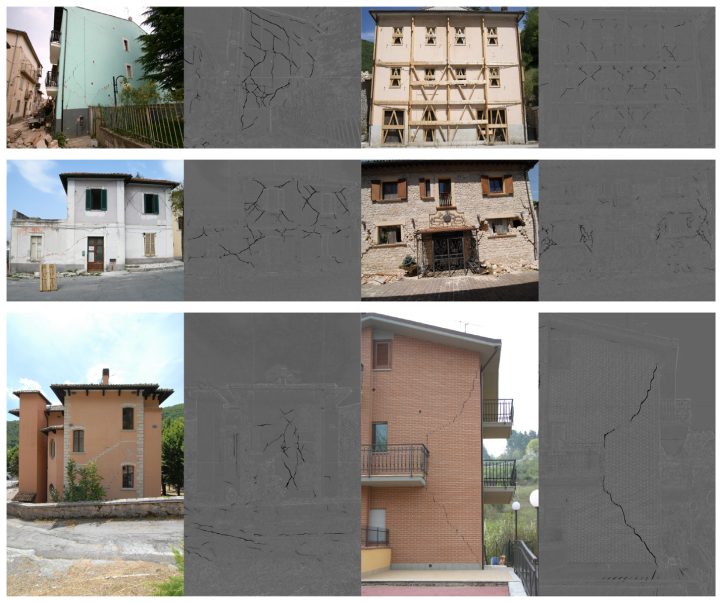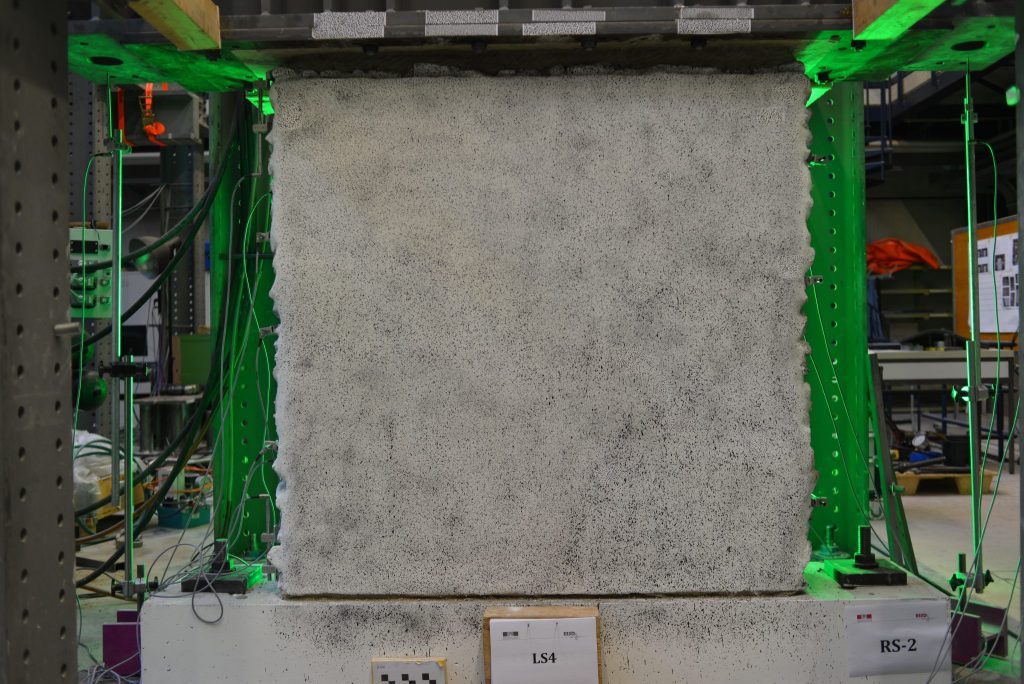Crack detection in images of damaged buildings
In our research article “TOPO-Loss for continuity-preserving crack detection using deep learning“, we proposed a method for identifying cracks in images of earthquake-damaged masonry buildings while preserving the continuity of the cracks. Existing crack detection methods struggle with this task and are negatively affected by imprecise labels. The proposed approach adapts a method used for reconstructing roads in aerial images by training a Convolutional Neural Network with a loss function that encourages continuity and can handle imprecise annotations. The authors evaluate the effectiveness of three loss functions (Mean Squared Error, Dice loss, and a new connectivity-oriented loss) on two datasets using TernausNet, a deep network with high accuracy in crack detection. The combination of these three loss functions significantly improves the quality of the predictions, and a new metric for continuity, Cracks Per Patch (CPP), is proposed. Additionally, a new dataset of earthquake-affected urban scenes with crack annotations is introduced, and the code is made publicly available for future research and benchmarking.

- Article:
- TOPO-Loss for continuity-preserving crack detection using deep learning [journal link]
- Source code: [source code link]
- Dataset: [dataset link]
- Funding: This work was partially funded by the Swiss Data Science Center (SDSC).
Crack detection on DIC images
We use the Digital Image Correlation (DIC) method at EESD to monitor the displacement fields of specimens during tests. For that, we paint our specimens in white and then spray black dots over their surfaces. This process is necessary to perform the conventional DIC method. You may see speckle patterns in Figure 1, which are applied on a plastered stone masonry wall.

During the load application, cracks start developing on specimens. These cracks are critical sources of information for further analysis such as damage assessment of load-bearing structural elements. Therefore, accurate detection of cracks on specimens from the images we take during the tests is necessary. In one of our studies on crack detection in stone masonry walls, we trained a deep convolutional neural network (a variant of U-Net) in order to classify pixels belonging to a crack. As an illustration, detected crack pixels on an image taken from the specimen RS6–one of the specimens in our testing campaign on rubble stone masonry walls–are shown in Figure 2.

- Article:
- Comparison of crack segmentation using digital image correlation measurements and deep learning [journal link]
- Source code: [source code link]
- Dataset: [dataset link]
- Funding: This work was funded by the Swiss National Science Foundation.